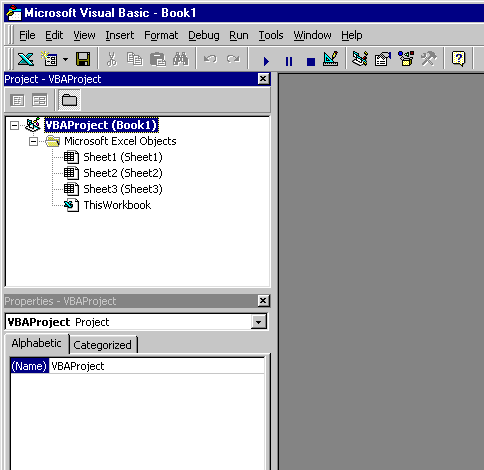I need to send commands to an external device using a serial port. Found this: http://dev.emcelettronica.com/serial-port.ation-excel-VBA. Professional Edition or Microsoft Excel 2003 (Visual Basic for Applications (VBA)). Serial communication may be disabled in the settings of your PC. Checkbox to select the communications control 'MsComm32.ocx.'
Hi - I'm an engineer working on trying to control a process using electrical resistance as a feedback. Cmos vlsi vtu notes cbcs. I had a development controller running in Excel VBA communicating with a Fluke 8845A digital multimeter. My pc recently died (for unrelated reasons) and am now attempting to setup the controller on another pc - but no luck.
The controller relies upon communicating with the 8845A multimeter through a piece of code written in Excel VBA. The code uses MSComm to data to the multimeter and recieve data back from it. This is a nice way to run the controller as I can take the data, process it in vba code, store it to the spreadsheet and then directly provide feedback on what to do next to a robot. I followed the process of downloading the MSComm ocx into the windows system folder (& system 32), registering it through reg command prompt, altering licences and this is where it goes wrong.
I can't add the mscomm axtive x object to a worksheet in excel. I get the following messages: Cannot insert object.
Can anyone help - I looked at removign the need for the MSComm use by employing some code I've found on-line but am having difficulty in getting this to work - I can open the port and send some data but have errors coming up when I try to read data. I need a solution asap!!! PS - this is to support a development process - the full production process controller will be programmed by a proper software engineer - not an aero eng! Microsoft Blog (URL 1) recommends replacing MSCOMM32.OCX with API (Application Programming Interface) code and links to a Serial Port Communication page (URL 2) where you can download VB source code to use the API.

May be Microsoft update might have caused this problem. Soniye hiriye ringtone free download. Some say that the older version of MSCOMM32.OCX has had its 'kill bit' set by update 'kb969898' (which was installed on system on 28th June).
Suggestions are to roll back the update, download an new version of MSCOMM32.OCX, or use a completely different method to read/write to the serial ports. Excel checks the Registry entry in 2 places for lincense for that control: HKEY_LOCAL_MACHINE SOFTWARE Classes Licenses and HKEY_CLASSES_ROOT Licenses for 4250E830-6AC2-11cf-8ADB-00AA00C00905 this controls GUID. I beleive the value is @='kjljvjjjoquqmjjjvpqqkqmqykypoqjquoun' If you had these it would be able to be used. Other cause: alternative is a class written by one of Microsoft employees that more or less mimics MSCOMM as far as the properties and the methods go. The advantages of this class?
It is free and you already know MSCOMM. It was posted on MSDN a while ago. Grab it here another way::: Try going back to your machine and commenting out code associate with the comm control, remove the control, and removing it from the references.
Then save the file. Now move the file to the other machine and recreate the reference to the comm control and put it back in the workbook.
Then uncomment the code.
Tim, It is very important to know what specific version of the MScomm32.ocx is being used. The available version I knew of that worked was 'killbit'd' a few years back by Microsoft. The MScomm32.ocx is also a licensed control requiring either the full install of Visual Basic (not.Net I think - more research may be required) or a purchased license registry key in order to work.
After conducting some basic research on the MScomm32.ocx control, I'm sure by now you've found it has been deprecated. When MS forwarded the specific killbit patch that killed that control, we had five machines that depended on lab chemistry entry based on that control as it connected PC's to chem lab measuring equipment to auto-transfer measurement results of several machines into our Access db.
It was only out of my extreme wariness and caution that I caught the killbit patch before it wiped out all our machines. It did kill one machine, (which is how I learned of the killbit patch), and then spent two days rebuilding that machine to regain it's lab functions - being very careful to NOT allow that killbit patch to be installed.